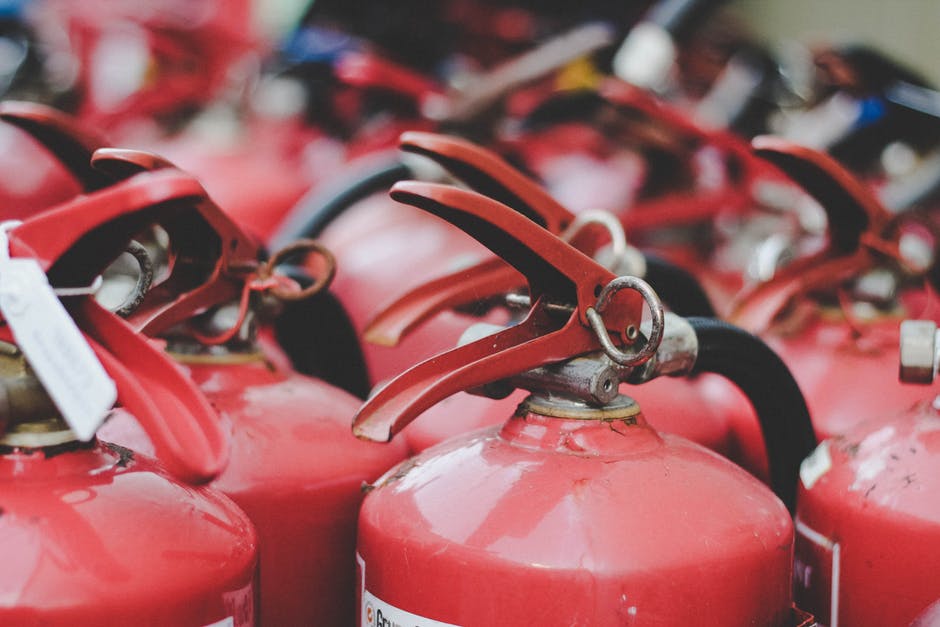It’s estimated that there are over 300,000 housefires per year. These types of fires aren’t the most common, but they’re definitely the most dangerous. Though housefires make up just over a quarter of all recorded fires, they cause the majority of deaths and injuries.
These statistics reinforce the importance of fire safety, and why you should have fire safety equipment at home. Most of us don’t pay much attention to potential fire hazards in our homes, especially with the advent of smoke detectors.
However, there’s a lot more on the market than smoke detectors. We’ll talk about some of the best fire safety equipment for your home in the paragraphs below.
Table of Contents
1. Smoke Detectors
Let’s face it, some things are cliched for a reason. While smoke detectors aren’t the only piece of equipment for fire prevention they do help with early detection, which is very important.
To keep a smoke alarm working, you’ll need to replace the batteries every once in a while. It’s also important to note that any type of smoke can trigger the alarm, so it may go off when somebody burns dinner or doesn’t close the door during a barbecue.
2. Carbon Monoxide Detectors
A carbon monoxide detector is just as important as a smoke detector, and perhaps even more so. The reason for this has to do with the properties of carbon monoxide.
When your house is beginning to fill with smoke, you’ll realize it quickly. Smoke is grayish-black and has a distinctive smell.
Carbon monoxide has no smell and no color. It’s also poisonous. About 500 people are killed by carbon monoxide every year, and many of them die with no idea of what’s going on.
Carbon monoxide can be a byproduct of fire because fire starts to release carbon monoxide after it runs out of air. However, sometimes the poison comes from sources you wouldn’t expect.
Car engines are notorious for this. Someone will forget to turn the car off after driving, and sometime later they’ll be rushed to the ER having become dizzy out of seemingly nowhere and collapsed.
The good news is that we’ve invented carbon monoxide detectors in response to this issue, and they save countless lives every year.
Another solution is to use electric appliances whenever possible because these don’t produce carbon monoxide. Some places, such as the Godrej nurture Electronic City are creating entire communities around this idea.
3. Fire Extinguishers
If you need fire safety equipment at home, a fire extinguisher is a must. While smoke and carbon monoxide detectors can give us an early warning that something is wrong, fire extinguishers can help us stop a fire before it gets out of control.
Fire extinguishers work by spraying a smothering agent onto the fire, which separates the fire from oxygen and causes it to die out. Some fire extinguishers use water for this purpose, while others use air. The most well-known type of fire extinguisher uses a chemical foam.
Fire extinguishers are somewhat limited in their capacity to put out fires. As the fire grows larger, more smothering agent is needed to combat it, and a fire extinguisher can only hold so much.
4. Escape Routes
In case of a major fire, the most important thing to have is an escape plan. Sometimes, it may be as simple as opening the door and leaving, while other cases may require a more specialized approach.
For instance, many schools and other public buildings have fire doors, which have been designed to burn slowly, thus slowing the progression of the fire and giving occupants more time to escape.
Those living in urban areas have likely seen or heard of fire escapes. Fire escapes were designed in the late eighteenth and nineteenth centuries when buildings were often made of cheap and highly-flammable materials. It was safer to use the metal stairways than to risk being caught in a burning building.
The good news is that building codes have improved, and disastrous apartment fires are far less likely. The age of the fire escape may be coming to an end.
However, it’s still best to be prepared for a fire and know how to get out of the building.
5. Sprinkler Systems
Sprinkler systems are an advanced method of fire control that helps stop a fire as soon as one is detected. Sprinklers work by detecting changes in heat since fires cause a drastic rise in temperatures. The temperature of a house fire often exceeds 1,000 or even 1,500 degrees Fahrenheit.
Once a suspiciously high temperature is detected, the sprinklers go off. Water is sprayed out of the system and onto the ground below. The water helps to smother the fire.
Plus, any water hitting the floor is often absorbed into other materials, making them harder to burn.
For instance, when the wood is submerged in water it takes the water into its pores. The pores are usually used to store oxygen, which the fire needs to burn. Thus, the water needs to be steamed out of the wood before the wood can burn.
Water also has a high resistance to heat, which means that it takes a very high temperature for the water to turn to steam, so it takes a wet object longer to burn than a dry one.
Fire Safety Equipment at Home: A Guide
Everybody should have at least some fire safety equipment at home. We’ve mentioned some of the most popular and effective equipment in the paragraphs above, but there’s a lot more out there. We encourage you to do more research on your own if you’re interested.
If you want more information and advice on health, hobbies, and other lifestyle topics, please visit our site.















